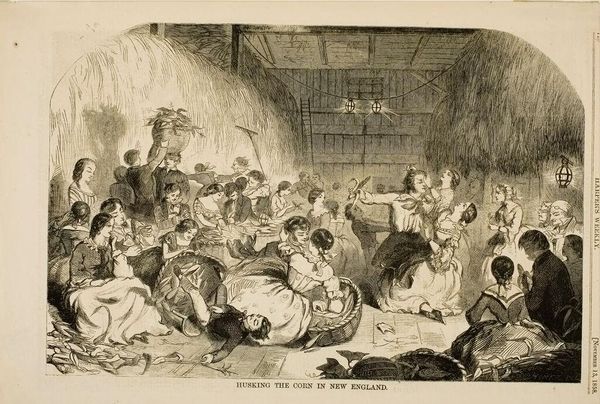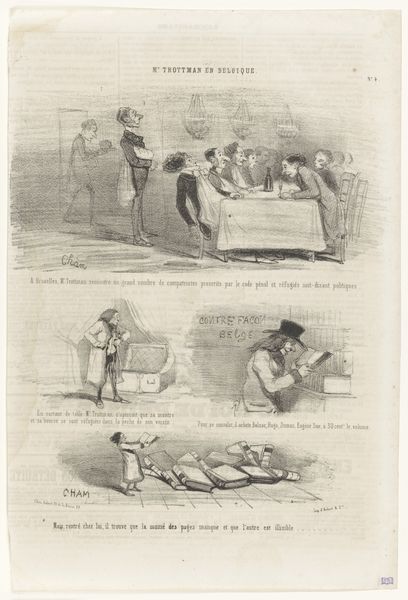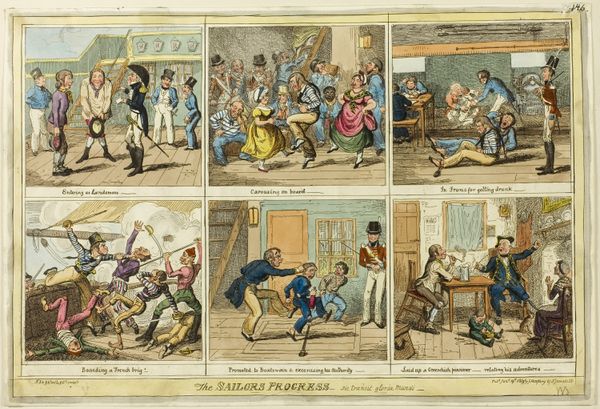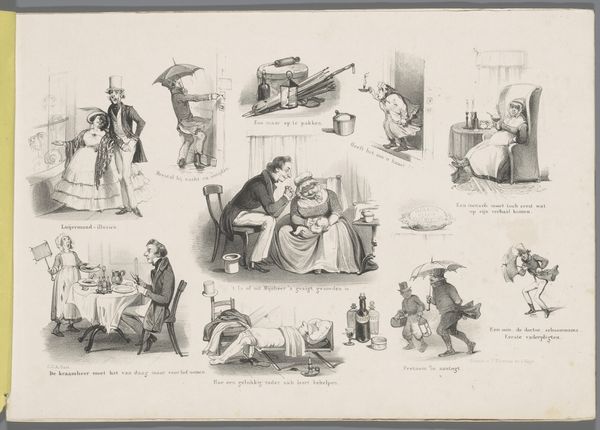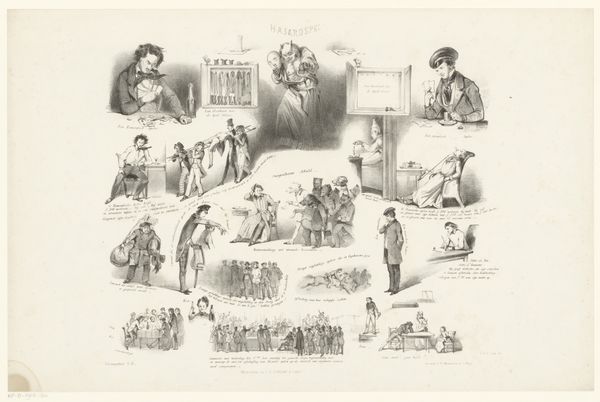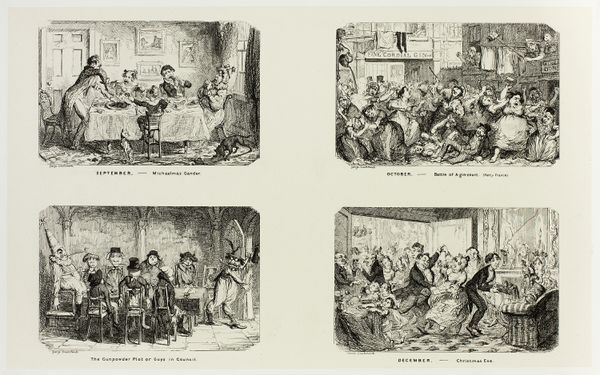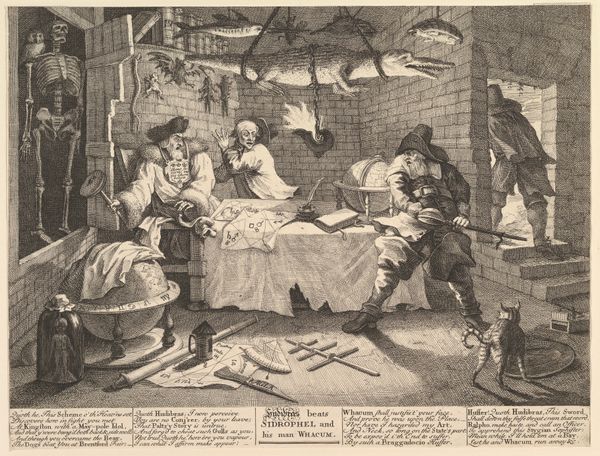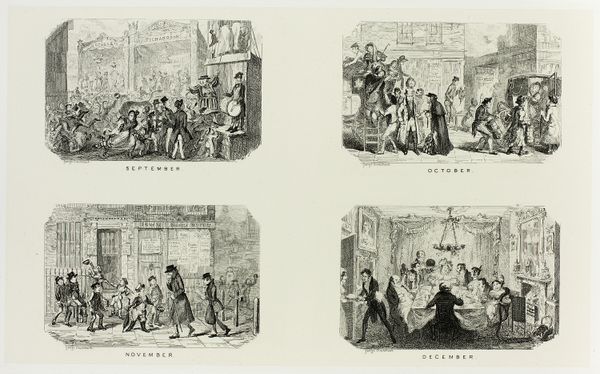
Thanksgiving Day 1860. The Two Great Classes of Society 1 - 1860
0:00
0:00
Dimensions: Image: 35.2 Ã 51.7 cm (13 7/8 Ã 20 3/8 in.) Sheet: 40.1 Ã 55.5 cm (15 13/16 Ã 21 7/8 in.)
Copyright: CC0 1.0
Curator: Winslow Homer's "Thanksgiving Day 1860. The Two Great Classes of Society" seems preoccupied with contrasting social strata. It’s quite fascinating to see this printed on a widely disseminated publication like Harper's Weekly. What strikes you about it? Editor: Well, it’s interesting that this image emphasizes such a stark division of labor around consumption. One class has "more dinners than appetite" and the other, "more appetite than dinners." How does the mode of production here in Harper's Weekly shape its meaning? Curator: Precisely! Consider the materiality of this mass-produced print. Its accessibility allowed for widespread dissemination of these class distinctions, perhaps influencing public perception and reinforcing those very social constructs. Editor: So, the printing process itself played a role in shaping how people understood these class differences at the time? Curator: Absolutely. The act of replicating and distributing this image through Harper's Weekly transformed it into a social tool, actively participating in the dialogue—or perhaps argument—about class. I now see a previously unseen layer of complexity, thank you! Editor: This has reshaped my understanding too. I hadn't considered the implications of print as a medium on shaping social awareness.
Comments
No comments
Be the first to comment and join the conversation on the ultimate creative platform.
